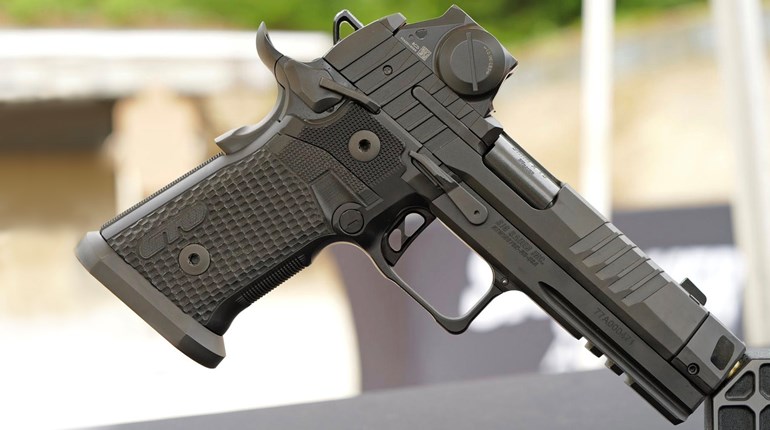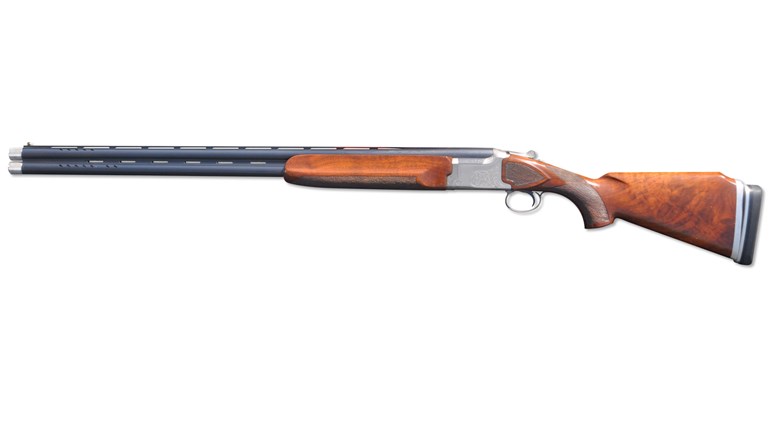
A common complaint among shooters is that range limitations make practicing transitions from target to target difficult. At indoor ranges, this is especially true. The situation isn’t new; it has existed for over a century.
Even in the early 20th Century, many shooters in urban areas, including the police, were limited to shooting at indoor ranges. In 1927, Captain Edward Langrish of the Hartford, CT, police department invented a target and drill to practice target transitions during indoor shooting. The target and drill were described in J. Henry Fitzgerald’s book Shooting, published in 1930.
The target was called the Langrish Limbless Police Target. It consisted of a silhouette with six large circular areas printed on it. The drill consisted of starting at a ready position and then shooting one shot into each circle as quickly as possible. Fitzgerald’s book states that Captain Langrish could fire six consecutive double-action shots from his revolver, one shot on each circle, at 12 yards in three to five seconds, timed with a stopwatch. He could rapidly place a hit into each of the circles in that time period.
A Precise Target Helps Create Precise Shots
 The Langrish target is easily replicated today by using a template to draw six circles on a silhouette target. Using a 6-inch template, six circles can be placed on a large silhouette such as a B-27 or NRA TQ-21. Put one circle on the head, one in the center of the body, and one each on the shoulders and hips. Number the circles. A small pot lid works well as a template.
The Langrish target is easily replicated today by using a template to draw six circles on a silhouette target. Using a 6-inch template, six circles can be placed on a large silhouette such as a B-27 or NRA TQ-21. Put one circle on the head, one in the center of the body, and one each on the shoulders and hips. Number the circles. A small pot lid works well as a template.
We can combine the structure of the state of Missouri Concealed Weapons Permit live fire testing with the Langrish Drill to make an effective session for practicing transitions on precision targets, such as the six-inch circle. Missouri’s live-fire requirement is to fire a minimum of 20 rounds at a distance of 7 yards on a B‑27 silhouette target for initial practice. This is followed by a live-fire test of 20 rounds at 7 yards. The hit standard for the test is a minimum of 15 rounds or 75 percent. The combined total round count is therefore 40 rounds.
While Captain Langrish undoubtedly knew the exact zero of his revolver, many shooters may not. Even a small divergence between point-of-aim and point-of-impact can affect the Langrish Drill. To compensate for this, the Drill can be modified by first shooting five shots into the circle on the head to verify the gun’s zero. If the hits aren’t near the center of the circle, the shooter knows that an adjusted aim point is necessary.
Once the gun’s zero is established, shoot one shot into each of the five remaining circles consecutively. Use an adjusted aim point, if necessary.
 To make the drill more effective, shoot the circles in a different order for each of the strings. For example, 1-2-3-4-5 for the first string, 5-4-3-2-1 for the second string and 3-4-5-2-1 for the third string.
To make the drill more effective, shoot the circles in a different order for each of the strings. For example, 1-2-3-4-5 for the first string, 5-4-3-2-1 for the second string and 3-4-5-2-1 for the third string.
Shooting a five-shot string for zero and then three strings of one shot each on the five circles would therefore give a total of 20 rounds. This is the equivalent of the “practice” for the Missouri CWP. One circle would have five hits and the other five circles would have three hits apiece.
Make a second target and repeat the entire drill. This would yield another 20 rounds, corresponding to the test part of the Missouri live fire requirement. Many shooters will find the shooting the initial 20 rounds at four yards and the second 20 rounds at seven yards to be the most effective practice regimen.
To finish a box of 50 rounds of ammo, bring the target back and mark the hits. Then place the target at 4 yards. Using primary hand only, fire five shots at the zeroing circle and verify where the gun is shooting. It may not shoot quite to the same point of impact as with two hands. Once the primary hand zero is known, fire a string of one shot at each of the remaining circles, again using an adjusted aim point, if necessary. Practice with the primary-hand only is always a useful addition to any practice session.
The Langrish Drill is an excellent way to begin learning how to acquire and accurately shoot multiple targets. Although it’s not quite the same as practicing the El Presidente drill, it is one of the few ways shooters at indoor ranges can practice transitions.


































